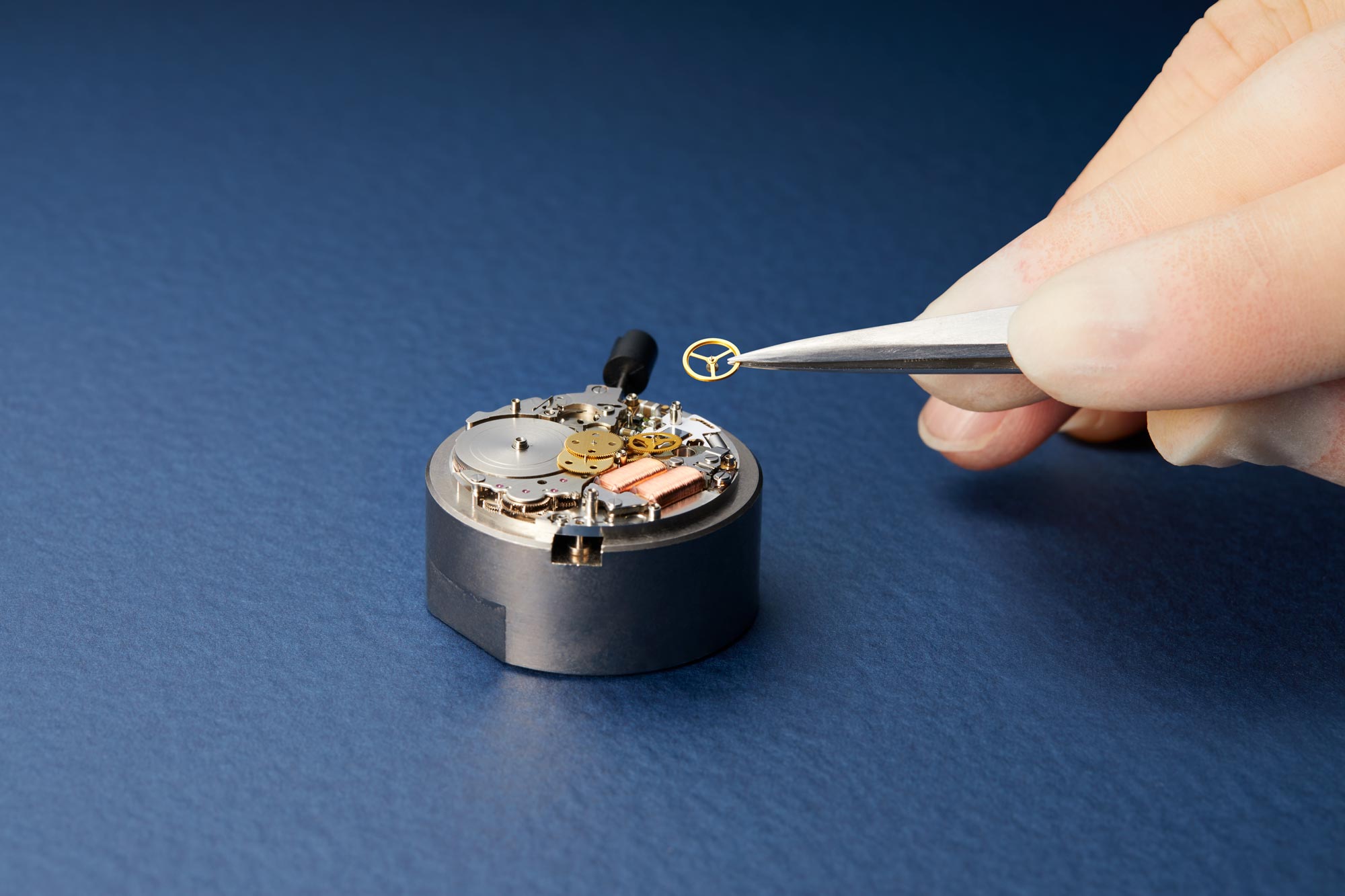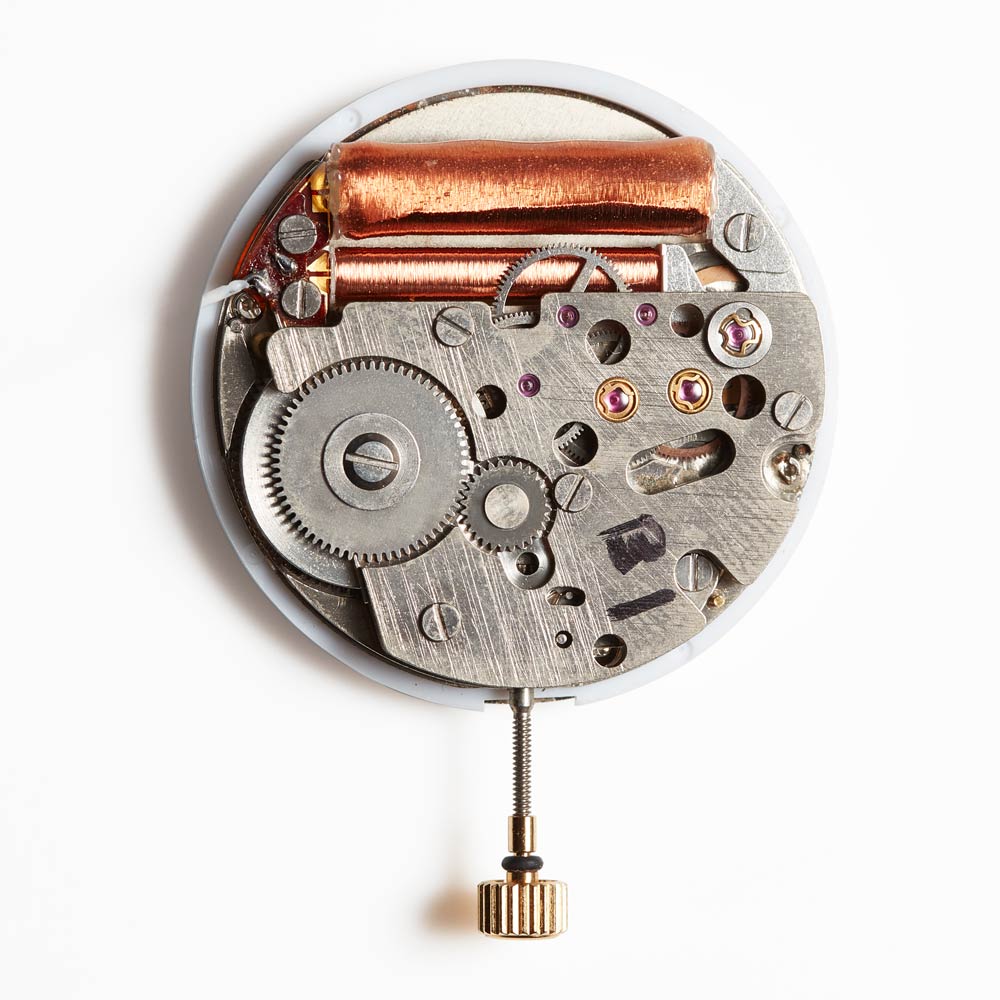

The storied history of Spring Drive can be traced back to the late ‘70s and a young, ambitious engineer by the name of Yoshikazu Akahane. Akahane worked for Suwa Seikosha (now Seiko Epson Corporation), joining the company in 1971, two years after Seiko released the Astron, the world’s first commercialized quartz wristwatch. Akahane initially worked on developing batteries for quartz watches, but not long after, he pivoted to work on Twin Quartz, a timepiece known for using two oscillators. In the Twin Quartz system, the purpose of the second quartz oscillator is to correct the errors of the first caused by temperature fluctuations.
Quartz Lock – the birth of a revolutionary idea
Around this time, Akahane was also developing a novel concept he called “Quartz Lock.” This system, in theory, would correct the errors of a traditional mechanical watch using the high precision timekeeping of a quartz watch device. He conceived this idea initially during the development of Twin Quartz in 1977, and in 1978, he applied for a pioneer patent. This concept later became known as Spring Drive.
Throughout the 1970s, Seiko saw immense success with quartz watches, and by 1982, Suwa Seikosha’s development teams turned their attention to new areas of focus regarding quartz timekeeping. There was work on solar power and what would ultimately be known as Kinetic. But when Akahane was brought into the fold of the Development and Design Department at Suwa, he came up with his theory of Quartz Lock. Immediately intrigued by the idea of creating a movement that could deliver the precision of quartz without being dependent on a power source other than the wearer, Suwa Seikosha greenlit the project.
From theory to prototype
Aiming to put his theory to the test, Akahane and a dedicated team began work on their first prototype. Despite existing integrated circuit technology limitations, the first Spring Drive prototype ran for only about four hours. Though inadequate for a commercial product, it proved that Akahane’s theory was more than just theoretical. Nevertheless, an IC with vastly improved energy efficiency and power consumption, nearly one hundred times less, was required for practical use. Suwa Seikosha hoped to achieve 48 hours of run time, enough to operate without winding down through the weekend. By 1983, the project was put on hold until IC technology could mature.

By 1993, energy-efficient, low-power integrated circuits were finally developed, so efforts were restarted. Because of the hybrid nature of this new regulation system, the second attempt brought into the fold Seiko Instruments Ltd. (now Seiko Watch Corporation), a company dedicated to the production of mechanical watches. Although development teams made notable progress, this joint effort did not deliver results that could be commercialized. The prototypes still consumed too much power, resulting in less than 24 hours of power reserve. A year later, in 1994, the project was shelved once again.

Rethinking energy efficiency
In 1997, Akahane, now the Deputy General Manager of the Watch Division at Epson, pushed to reopen the project despite there being no radical developments in the three years since to achieve the desired power reserve goals. This time, however, the circuit design team was tasked with entirely rethinking their approach to energy efficiency, both in terms of generation and consumption. Through trial and error, the team discovered a way to harness the power that had been lost during braking in previous iterations, and, later that year, they created a highly efficient IC called the SOI-IC, which allowed the watch to consume less power than it produced, paving the way to Spring Drive.

In April 1998, Akahane and his team presented a technical release at Baselworld, and the following year Seiko returned to Basel with what became known as Spring Drive. The announcement was met with great acclaim. In December 1999, Seiko released three limited edition watches, two powered by the revolutionary caliber 7R68 and one under Credor labeled the 7R78, the world’s first Spring Drive timepieces and movements brought to market.
Sadly, before Seiko presented Spring Drive to the world at the 1999 Baselworld fair, Yoshikazu Akahane, the man who envisioned Spring Drive and led the teams responsible for its creation, passed at the age of 52 before his nearly 20-year endeavor saw its conclusion. Nevertheless, Akahane’s drive, persistence, and commitment to an idea that faced numerous roadblocks cannot be overstated, and it is from his repeated efforts over the course of two decades that Spring Drive exists today.

Between all three models of Spring Drive released in 1999, only 900 pieces were produced. It was not until 2004 that Spring Drive was introduced in continuous production for the first time, approximately 27 years after Akahane conceived his concept. 2004 also saw the birth of Spring Drive in Grand Seiko via caliber 9R65, one of the most popular movements in Grand Seiko to this day.






